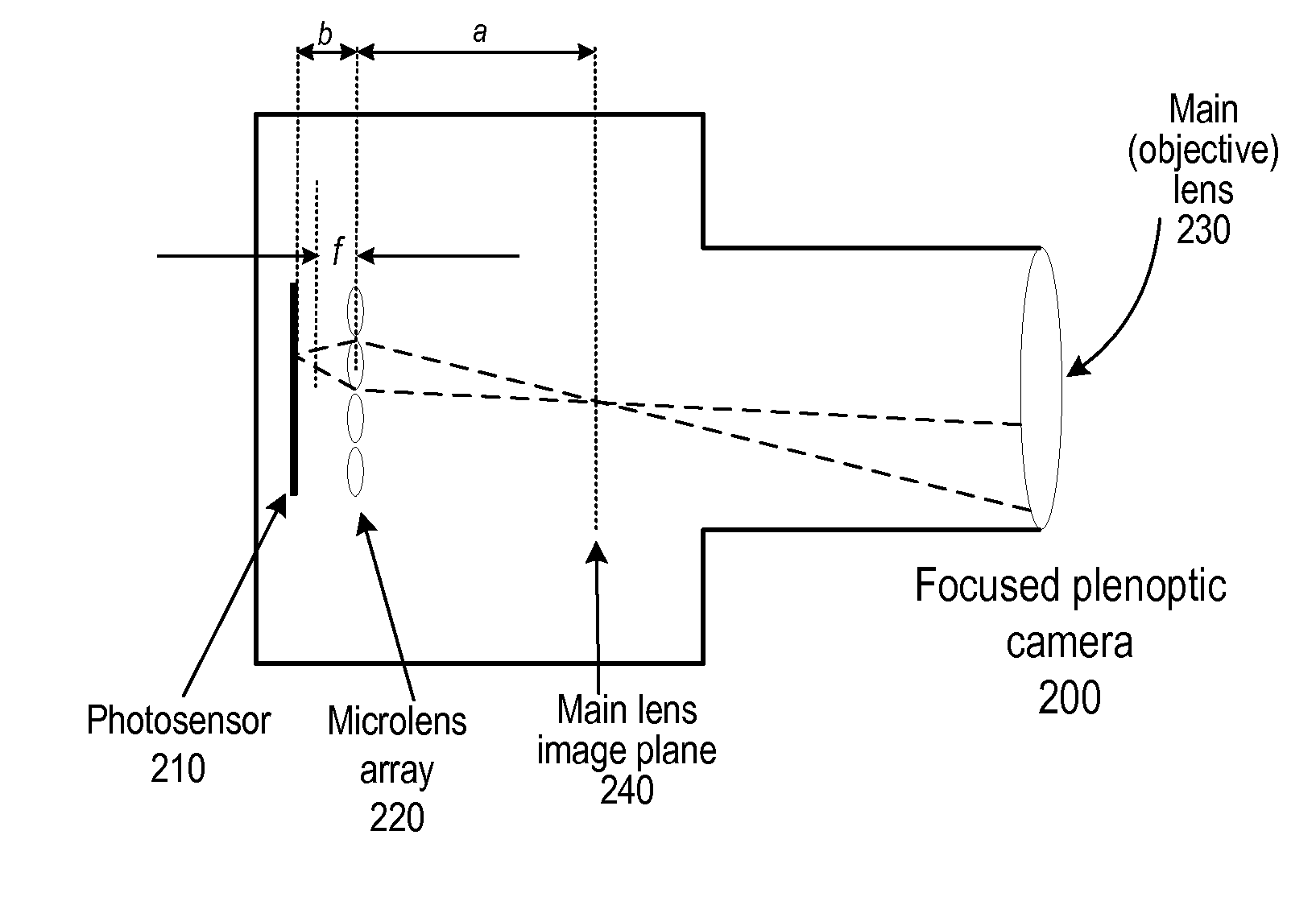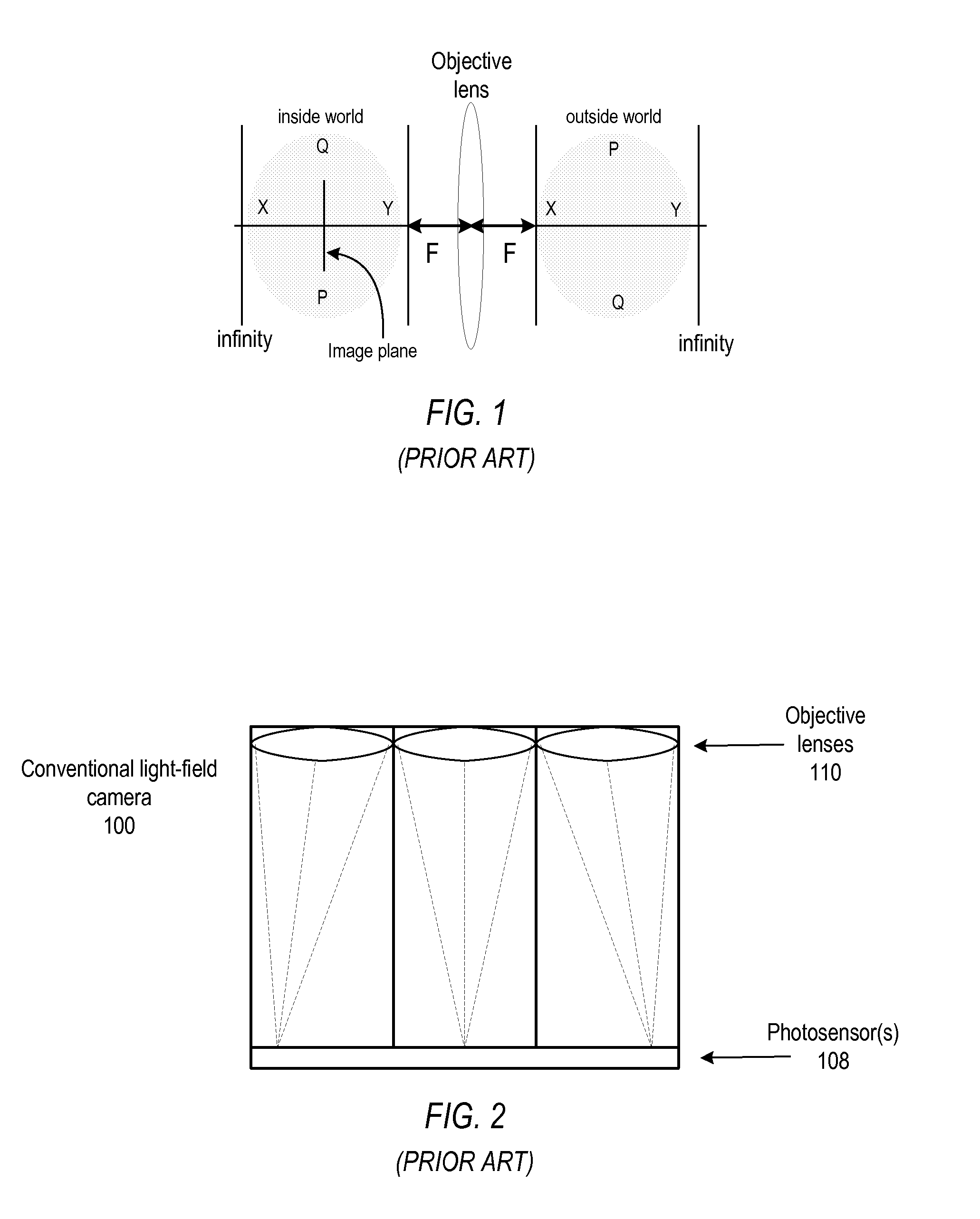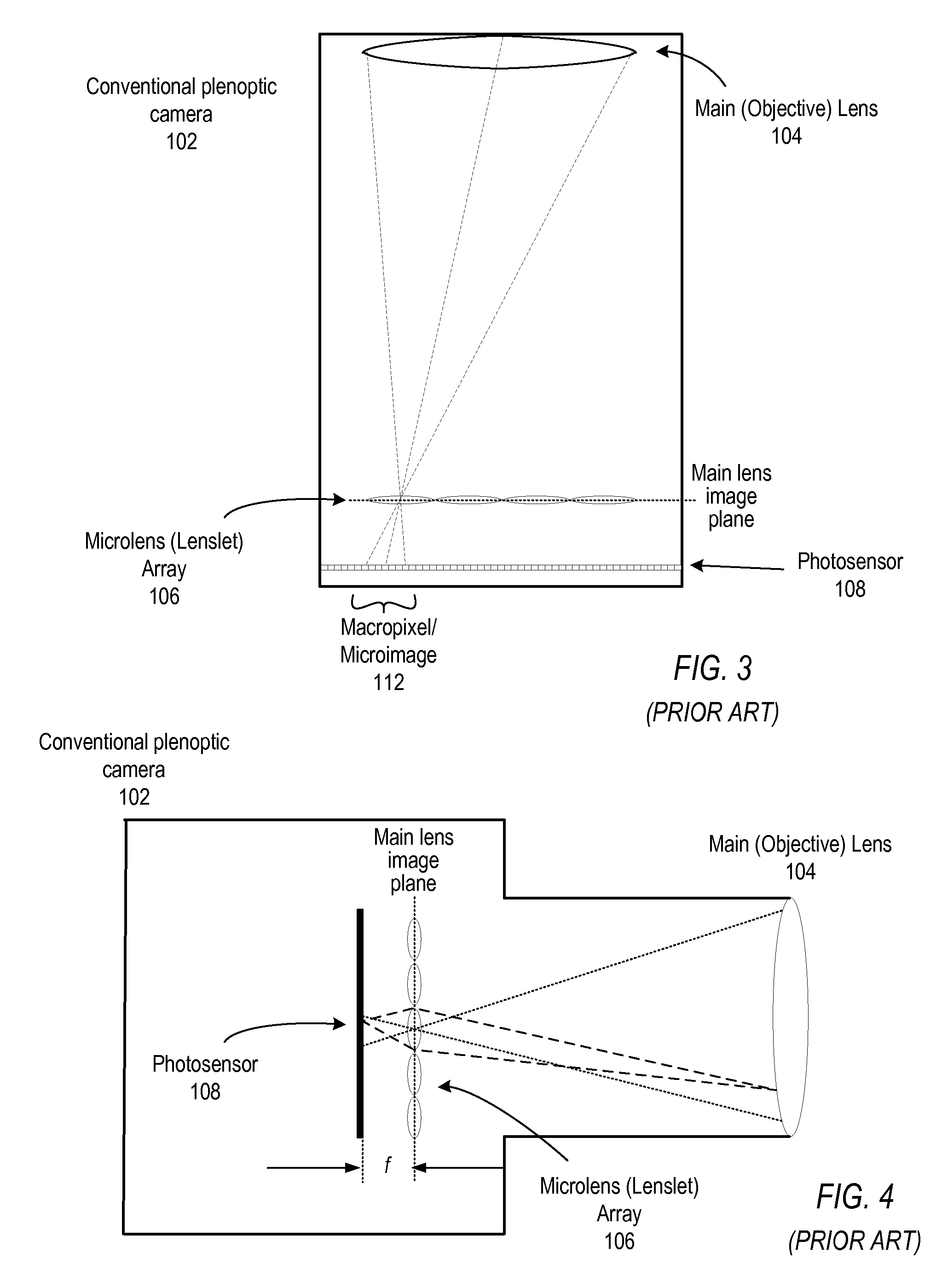Focused Plenoptic Camera Employing Different Apertures or Filtering at Different Microlenses
a technology of microlenses and apertures, applied in the field of focused plenoptic cameras, can solve the problems of difficult environment capture, conventional cameras fail to capture a large amount of optical information, and the image contains no information about the direction of light, etc., to achieve sharper, higher spatial resolution, and increase or maximize spatial resolution
- Summary
- Abstract
- Description
- Claims
- Application Information
AI Technical Summary
Benefits of technology
Problems solved by technology
Method used
Image
Examples
example results
[0127]Some embodiments of a focused plenoptic camera as described herein may be implemented in film cameras. Embodiments may, for example, be implemented in large-format film cameras. An example large-format film camera embodiment is illustrated in FIG. 8. One example embodiment may, for example, be implemented in large-format film camera using a 135 mm objective lens and 4×5 format film. A focused plenoptic camera based on a large-format film camera rather than on a digital camera may be used for experimental purposes in order to avoid resolution constraint of digital sensors. However, film camera embodiments of the focused plenoptic camera design are practical and may have practical applications. In conjunction with current high-resolution scanners used to digitize captured images from negatives or prints, large-format film camera embodiments are capable of 1 gigapixel, or even higher, resolution for the flat (2D) representation of the 4D radiance (the raw flat).
[0128]A component ...
PUM
 Login to View More
Login to View More Abstract
Description
Claims
Application Information
 Login to View More
Login to View More - R&D
- Intellectual Property
- Life Sciences
- Materials
- Tech Scout
- Unparalleled Data Quality
- Higher Quality Content
- 60% Fewer Hallucinations
Browse by: Latest US Patents, China's latest patents, Technical Efficacy Thesaurus, Application Domain, Technology Topic, Popular Technical Reports.
© 2025 PatSnap. All rights reserved.Legal|Privacy policy|Modern Slavery Act Transparency Statement|Sitemap|About US| Contact US: help@patsnap.com



